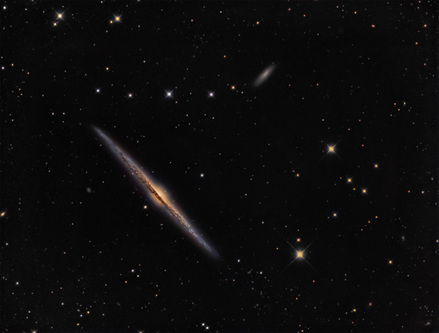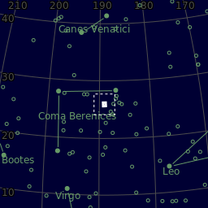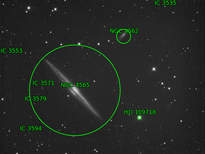NGC4565 The Needle galaxy
|
NGC4565 (also known as the Needle galaxy or Caldwell 38) is an edge-on spiral galaxy about 30 to 50 million light-years away in the constellation Coma Berenices.
It is known as the Needle Galaxy for its narrow profile. First spotted in 1785 by Sir William Herschel (1738–1822), it is one of the most famous examples of an edge-on spiral galaxy. NGC4565 is a giant spiral galaxy more luminous than the Andromeda Galaxy and it has been proposed that if it were viewed face-on, it would be the most spectacular of the galaxies of its type in the nearby Universe. Details M: Mesu 200 T: ODK10 C: QSI683 with Baader LRGB filters 50x1800s Luminance 24x600s for Red, green and blue filters Total exposure 37 hours 30 minutes. |



